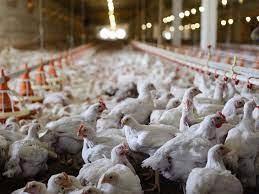 A recent article in Emerging Infectious Diseases confirmed a decrease in microbial resistance among bacterial pathogens derived from broiler chickens over a range of 6 to to 38 percent as a result of restrictions on administration of antibiotics to flocks.
A recent article in Emerging Infectious Diseases confirmed a decrease in microbial resistance among bacterial pathogens derived from broiler chickens over a range of 6 to to 38 percent as a result of restrictions on administration of antibiotics to flocks.
The Canadian Integrated Program for Antimicrobial Resistance Surveillance detected increasing resistance to ceftiofur, a third-generation cephalosporin in 2005. Concurrently Salmonella Heidelberg resistant to the drug was isolated from both retail chickens and humans. Accordingly, ceftiofur was eliminated for routine administration in ovo to broiler chicks in the Province. Within a year there was a reduction in the prevalence of ceftiofur-resistant Salmonella Heidelberg.
 A strategy to reduce antimicrobial use was adopted in 2014 by the Canadian broiler industry. Third generation cephalosporins and fluoroquinolones were eliminated for preventive administration in 2014. By 2018 the program was extended to include a number of antibiotic classes used in human therapy including lincosamides, macrolides, and aminoglycosides. The third phase, yet to be implemented, will be the elimination of bacitracins and tetracyclines, originally intended for the end of 2020.
A strategy to reduce antimicrobial use was adopted in 2014 by the Canadian broiler industry. Third generation cephalosporins and fluoroquinolones were eliminated for preventive administration in 2014. By 2018 the program was extended to include a number of antibiotic classes used in human therapy including lincosamides, macrolides, and aminoglycosides. The third phase, yet to be implemented, will be the elimination of bacitracins and tetracyclines, originally intended for the end of 2020.
Huber, L et al Reduction in antibiotic use and resistance to Salmonella, Campylobacter and Escherichia coli in broiler chickens, Canada 2013-2019. Emerging Infectious Diseases. 27:9.September (2021) early release.